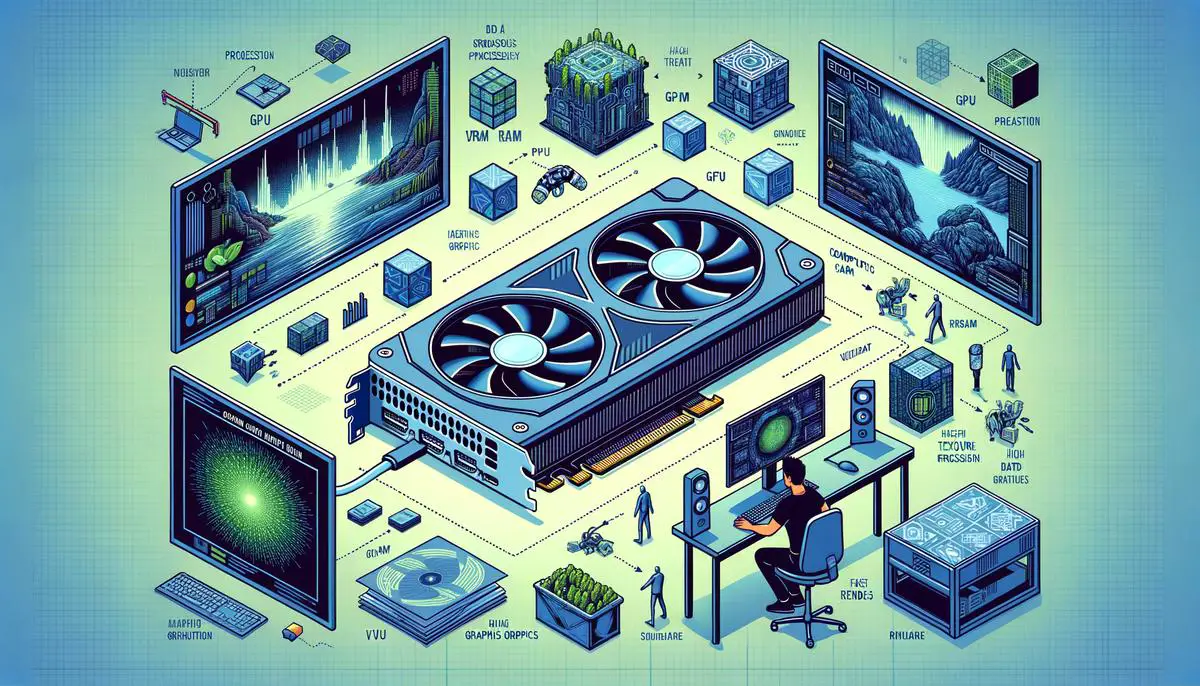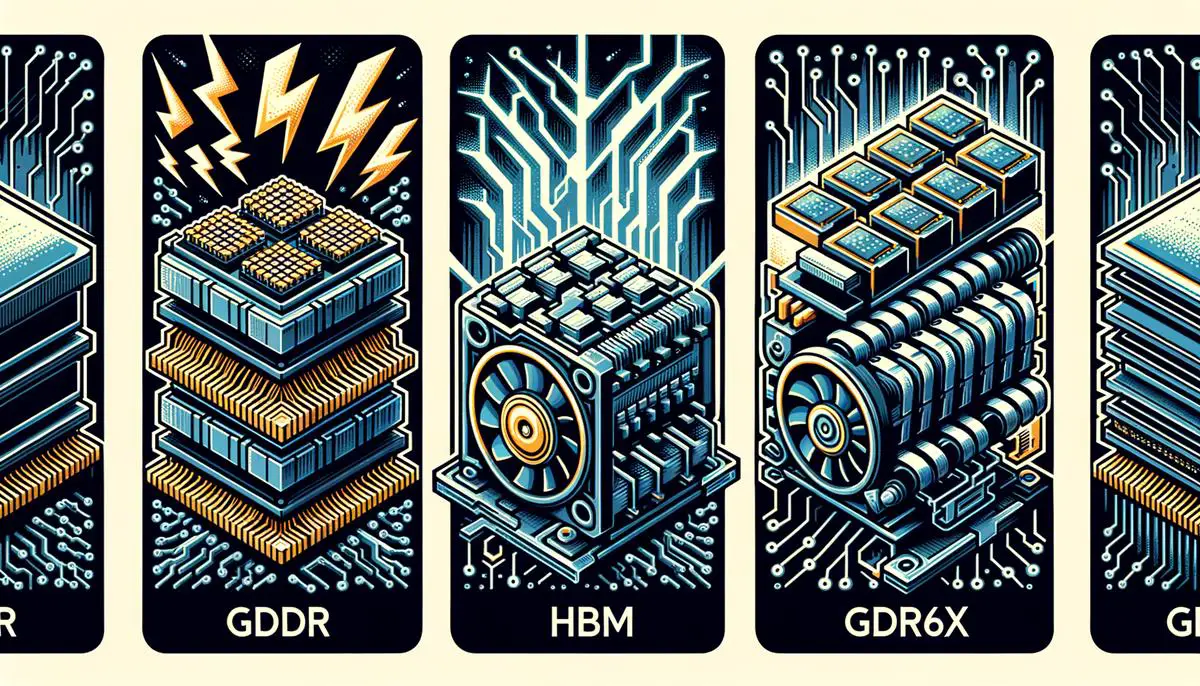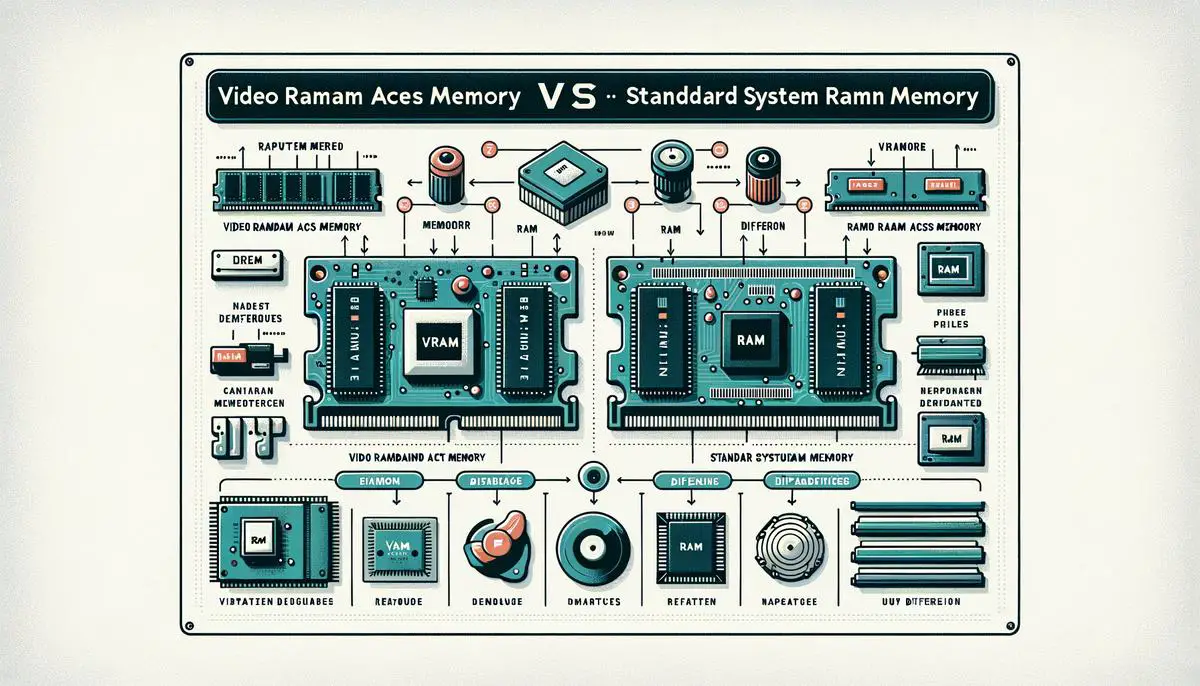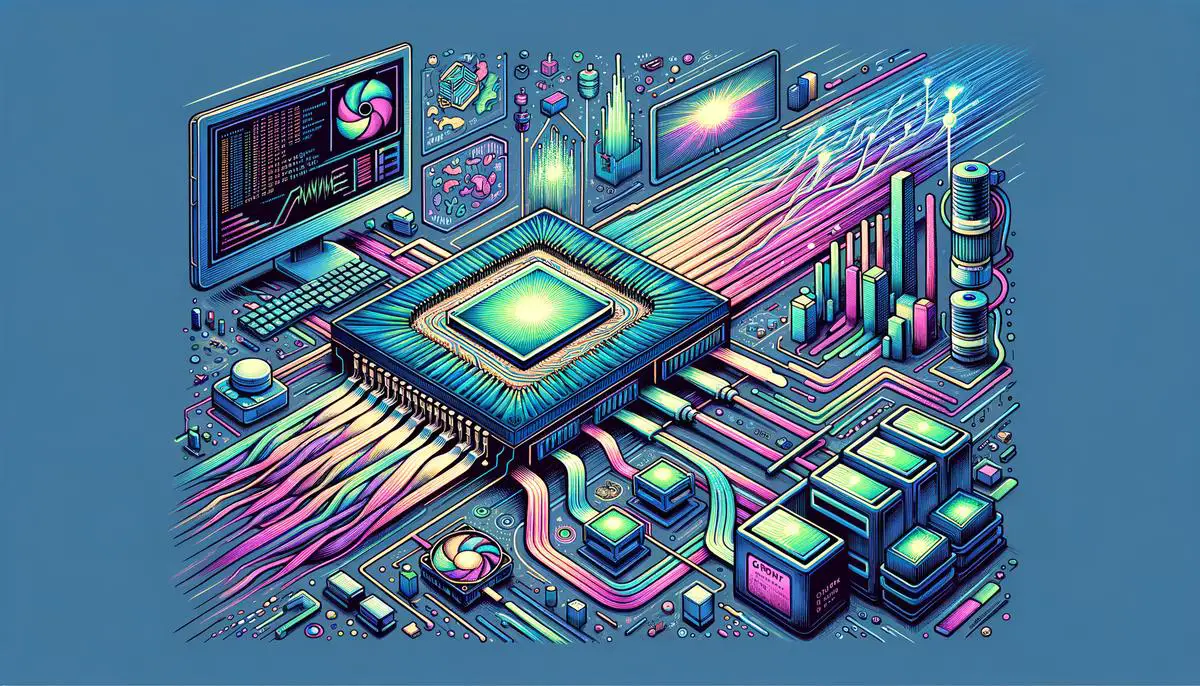Have you ever wondered how the stunning visuals in video games or the crisp clarity of a professional graphic design come to life on your computer screen? The secret lies in a special kind of memory known as Video Random Access Memory, or VRAM. This magical component works behind the scenes to store and rapidly deliver the image data needed to render everything from explosive game environments to detailed 3D designs. As we dive into the world of VRAM, you’ll learn about its key functions, explore the different types that power various devices, and understand how it compares with standard RAM, providing a smoother visual experience for users.
Functions of VRAM
VRAM, or Video Random Access Memory, plays a crucial role in the processing and rendering of computer graphics. Essentially, VRAM is a special type of memory reserved for storing image data that the computer’s graphics processing unit (GPU) needs to access quickly. This rapid access is vital for rendering high-resolution images and video smoothly, making VRAM an essential component for any graphics-intensive application such as video gaming, graphic design, and video editing.
The primary function of VRAM is to act as a buffer between the CPU (central processing unit) and the display, allowing for the efficient handling of large graphics files. By storing texture maps, z-buffers (which manage image depth), and frame buffers (holding the complete frame of an image) in VRAM, the GPU can quickly fetch and render these elements, significantly enhancing the overall graphics performance. The more VRAM a computer has, the better it can handle complex visuals at higher resolutions without experiencing lag or stutter. This is particularly important in applications requiring real-time rendering, where smooth, detailed visuals are crucial for a satisfactory user experience.

Types of VRAM
Different types of VRAM available today include GDDR (Graphics Double Data Rate), HBM (High Bandwidth Memory), and VRAM types specific to certain GPUs like Nvidia’s GDDR6X. GDDR versions, with GDDR6 being the most common, are tailored for high performance in mainstream graphics cards. The latest iteration, GDDR6X, introduced by Micron in partnership with Nvidia, pushes data rates further, allowing for even faster graphics processing and rendering. This makes GDDR6 and GDDR6X highly sought after for gaming and professional visualization tasks, where swift memory access speeds are crucial.
On the other hand, HBM stands out by offering exceptionally high bandwidth in a compact form factor. Unlike GDDR memory, which is placed around the GPU, HBM is stacked directly on top of the chip, significantly reducing the distance data travels. This design allows for quicker data transfer rates and lower power consumption, making HBM ideal for applications where energy efficiency is as important as performance. However, the complex manufacturing process of HBM makes it more expensive, which is why it’s generally found in high-end graphics cards and computing systems specialized for tasks like deep learning and scientific simulations. Each type of VRAM plays a crucial role in balancing the trade-offs between cost, power efficiency, and performance in computer graphics systems.

Comparing VRAM with Standard RAM
Contrasting with standard system RAM (Random Access Memory), Video RAM (VRAM) is specifically designed to serve the needs of the graphics processing unit (GPU). While regular RAM caters to a broad range of computing tasks, storing data and programs that the CPU accesses, VRAM is fine-tuned for the high-speed, high-volume requirements of rendering images. This differentiation lies not only in the purpose but also in how each type of memory is built and operates. VRAM, with its capability to handle multiple data requests simultaneously, is a cornerstone in delivering graphics without bottlenecks, ensuring that visuals appear seamlessly on display devices.
Moreover, the architectural distinctions between VRAM and system RAM highlight their differing roles in a computing environment. VRAM is constructed to support the parallel processing capabilities of modern GPUs, enabling quick access to textures, shaders, and geometric data necessary for rendering graphics. This special configuration allows VRAM to rapidly feed graphics and video content to the display, an essential function not required of standard RAM. Conversely, system RAM focuses on providing a versatile memory pool that the CPU can draw from for a variety of tasks beyond graphics, reflecting a divergence in design priorities that underscores the unique contribution of VRAM to the visual experience.

So, through our journey exploring VRAM, we’ve uncovered how this specialized memory plays a pivotal role in bringing to life the graphics we enjoy in games, movies, and professional applications. By understanding the different types of VRAM, like SGRAM and MDRAM, and how they compare with regular RAM, we gain a deeper appreciation for the technology that enhances our visual experiences. Whether you’re a gamer seeking the highest performance or a professional requiring precision in graphics work, recognizing the importance of VRAM can guide you in making informed decisions about your computing needs.

Emad Morpheus is a tech enthusiast with a unique flair for AI and art. Backed by a Computer Science background, he dove into the captivating world of AI-driven image generation five years ago. Since then, he has been honing his skills and sharing his insights on AI art creation through his blog posts. Outside his tech-art sphere, Emad enjoys photography, hiking, and piano.
